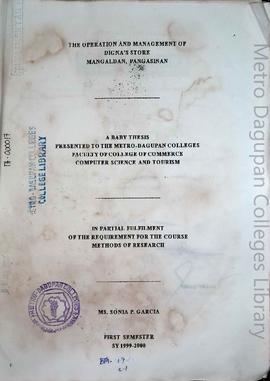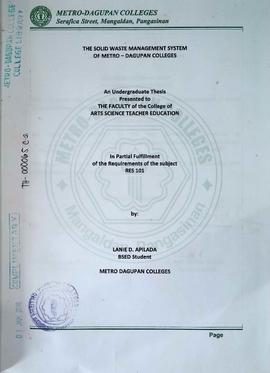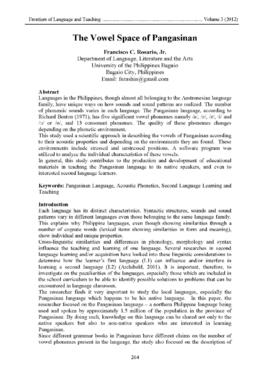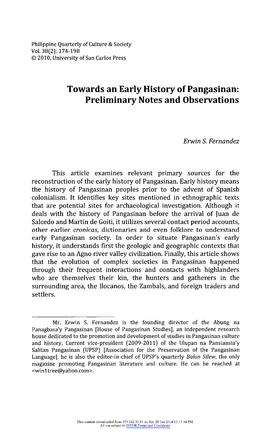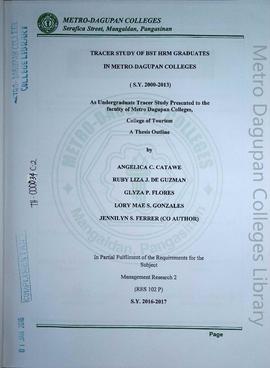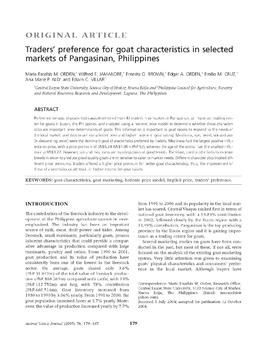Abstract: Preference for goat characteristics was determined from 42 traders in six markets in Pangasinan, an important trading center for goats in Luzon, the Philippines, and analyzed using a hedonic price model to determine whether these characteristics are important price determinants of goats. This information is important to goat raisers to respond to the needs of the local market, and thus to achieve a better price and higher income in goat raising. Meatiness, size, breed, sex and age (in descending order) were the dominant goat characteristics preferred by traders. Meatiness had the largest positive influence on price, with a price premium of US$6.24 (US$1.00 = PhP 53), whereas the age of the animal had the smallest influence at US$3.72. However, size and meatiness are manifestations of good breeds. Therefore, continued efforts to improve
breeds in order to produce good quality goats are imperative to cater to market needs. Different characteristics implied different price premiums. Traders offered a higher price premium for better goat characteristics; thus, the improvement of these characteristics could result in higher returns for goat raisers.
Orden, Maria Excelsis M.

